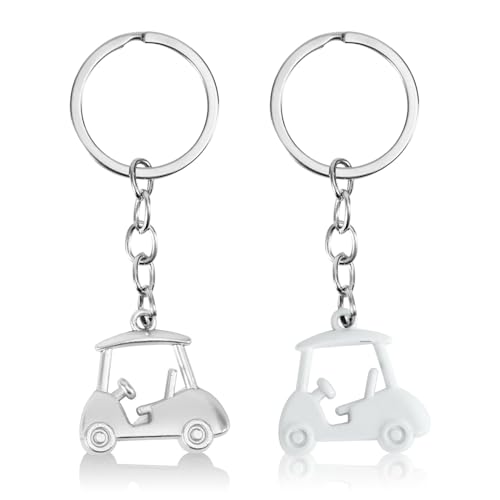Ever found yourself wondering if those Nitro golf balls you’ve seen can actually be used in your weekend golf league? You’re not alone. With a name that sounds like they could rocket off the tee, it’s natural to question their legality.

But before you ditch your usual balls for a sleeve of Nitros, let’s dig into the rules that govern what makes a golf ball legal for play. After all, you wouldn’t want to shave strokes off your game only to find out you’ve been playing with an illegal ball, right?
What Makes a Golf Ball Legal?
When you’re passionate about golf, every detail counts, especially the golf ball you play. It’s not just about feel or distance; it’s about playing by the book. Understandably, you want every edge you can get on the course, but it’s crucial to ensure your gear meets the standards set by the governing bodies of golf.
The United States Golf Association (USGA) and the R&A lay down the rules for legal golf balls. These regulations focus on size, weight, symmetry, and performance during play. Specifically, a legal ball must not weigh more than 1.620 ounces (45.93 grams) and should have a diameter not less than 1.680 inches (42.67 millimeters). The ball’s initial velocity and overall distance are also capped to maintain fairness in the game.
Not only must golf balls conform to these physical properties, but they also have to pass the on-course testing. It’s why you’ll often find the ‘Conforming Golf Ball List’—a regularly updated document listing all balls that have been tested and approved for play. Before you hit the greens with a new type of ball, you can check this list to make sure you’re in the clear.
| Properties | Standard Requirements |
|---|---|
| Weight | Not more than 1.620 oz |
| Diameter | Not less than 1.680 inches |
| Symmetry | Must be symmetrical |
| Initial Velocity | Limited |
| Overall Distance | Standardized |
Here’s a handy tip: always look for the USGA and R&A mark on the ball. Manufacturers often print this symbol on balls that meet the criteria. Don’t get caught playing a non-conforming ball—while it’s unlikely to happen in a friendly weekend league, using one in a regulated tournament could mean penalties or even disqualification.
Golf Ball Standards and Regulations
When you’re on the quest to improve your game and shoot lower scores, understanding the equipment regulations is just as vital as perfecting your swing. Delving into the specific standards for golf balls, it becomes clear that precision and uniformity are the game’s pillars.
The USGA and R&A, guardians of the game, have laid down clear-cut specifications for golf balls to ensure fair play. A legal golf ball must not exceed a weight of 1.620 ounces and should have a diameter not less than 1.680 inches. These are not just numbers; they represent the fine line between a competitive edge and the breach of golf’s sacred rules.
Performance consistency is also non-negotiable. Ball manufacturers are tasked with ensuring that their products deliver reliable results under various playing conditions. So when you’re choosing balls, consider their construction, design, and materials, which should all contribute to a consistent playing experience. Aerodynamics play a huge role here; the dimple pattern on the golf ball, for example, can influence distance and trajectory significantly.
It’s a no-brainer to reach for balls that bear the marks of the USGA and R&A. It’s your seal of assurance that you’re playing with equipment that upholds the honor of the sport. Even more, using aproved golf balls means one less variable to worry about when you’re analyzing your performance.
Keep in mind that the “Conforming Golf Ball List” is updated periodically. Make it a habit to check the list, especially if you’re experimenting with new brands or models. Brands like Nitro might offer tempting performance benefits, but it’s their conformity to regulations that will determine if they’re an ally on the fairway.
Remember, the integrity of your game starts with the gear you choose. Stick to the rules, and you’ll be free to focus on the skills that truly take your game to the next level. Choose wisely, practice relentlessly, and let the quest for lower scores continue.
The Conformity Test
When you’re on the hunt for the perfect golf ball, understanding the conformity test is critical. This isn’t just a formality; it’s the foundation that ensures every shot you play is rooted in the game’s integrity. Golf balls are put through rigorous tests to meet the stringent standards the USGA and the R&A have established. Things like initial velocity, overall distance, and symmetry are all under the microscope.
To start, individual balls from a given batch are selected at random. Imagine your own batch of Nitro golf balls is up for examination – you’d want them to pass with flying colors. Performance consistency is pivotal so that the ball you drive on the first hole behaves just like the one you’re putting on the eighteenth.
Think about the last time your ball sliced or hooked unexpectedly. Was it you or the ball? The symmetry test clears up this mystery. It ensures that the ball’s design doesn’t favor any one direction. When a ball is USGA and R&A approved, you can trust its straightness, effectively taking one variable out of the equation of your swing.
Engineers design balls with edges in aerodynamics that still comply with legal standards. So while designers push the boundaries of technology, they don’t compromise on fairness. Advanced testing includes robotic golfers and wind tunnels – tools that give a quantitative edge to what you feel on the course.
Here’s a stat to consider:
| Statistic | Requirement |
|---|---|
| Maximum Weight | 1.620 ounces |
| Minimum Diameter | 1.680 inches |
| Maximum Velocity | 250 feet/second |
Choosing balls that pass these tests means you’re not just improving your game, you’re respecting it. And for serious golfers looking to shave points off their handicap, this assurance is non-negotiable. Remember, the ball can’t make you a better golfer, but the wrong ball can hold you back. Check the “Conforming Golf Ball List” to ensure that your investment in Nitro golf balls, or any other brand, isn’t wasted on a ball that won’t be allowed when your scores start to count.
The Difference Between Nitro Golf Balls and Traditional Golf Balls
As a seasoned golfer, you’re familiar with the tried-and-true brands that dominate the fairways. But in your pursuit of lower scores, you’ve likely heard about Nitro golf balls. Understanding the differences between these up-and-comers and traditional golf balls can be crucial in choosing the right equipment for your game.
Nitro golf balls are known for their explosive distance, a feature that springs from their unique construction. They boast a two-piece design, typically consisting of a solid rubber core and a durable surlyn cover. This construction is tailored to offer greater energy transfer from club to ball, resulting in more yardage off the tee. To provide performance at a value, these balls often prioritize distance over other aspects like spin control and feel.

In contrast, traditional golf balls, especially those used by professionals and low-handicap golfers, often come in three- or four-piece designs. These multi-layered balls combine a core, one or more mantle layers, and a urethane cover, offering a balanced performance.
Here’s a quick comparison:
- Nitro Golf Balls:
- Traditional Golf Balls:
Additionally, the cover material plays a significant role. Traditional balls with urethane covers tend to provide better spin control around the greens, which can be a game-changer when you’re aiming to shave off strokes. They also offer a softer feel, which can enhance your touch on putts and finesse shots.
Choosing between Nitro and traditional golf balls often boils down to personal preference and play style. While Nitro balls can add distance to your game, you might prefer the all-around playability and control of traditional golf balls. Remember, the right ball should match not only your skill level but also your goals on the course. Try different types to see which best complements your game and keep an eye on how they impact your scorecard.
Are Nitro Golf Balls Legal?
When you’re eyeing that next drive down a lush fairway, knowing whether your equipment meets the strict regulations of the game is crucial. So it’s natural you’d ask about Nitro golf balls – are they legal for play? Absolutely, they are. These balls are designed to conform to the rules set by the USGA and the R&A, so you can swing with confidence.

For a ball to be considered legal, it has to pass several tests with regards to size, weight, and symmetry. Just like any other approved ball, Nitros adhere to these standards. Typically measuring not less than 1.68 inches in diameter and weighing no more than 1.620 ounces, Nitro balls are on par with the competition. They also pass the tests for initial velocity and overall distance, which are designed to ensure no unfair advantages on the course.
The proof, as they say, is in the pudding—or in this case, the Conforming Golf Ball List. Prior to any tournament, it’s wise to check this list, where you’ll find Nitro golf balls among the ranks of those allowed in play. If you’re playing in a casual round, you’re less likely to need this level of verification, but it’s good practice to get in the habit of knowing what’s in your bag.
With Nitro golf balls, you’re getting a unique blend of explosive distance and robust durability. While they might not offer the same tactile feedback or spin control as higher-end multi-layer balls, they often boast a price point that makes them an attractive choice for the recreational golfer looking to enjoy the round without breaking the bank. Whether you’re crushing drives or sharpening your short game, choosing the right ball is a key step in lowering your scores. Always keep in mind that while equipment is important, it’s your skill and strategy that ultimately make the difference.










